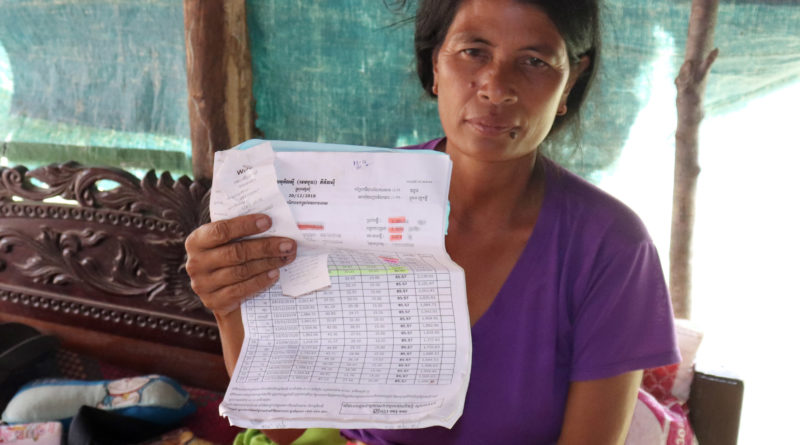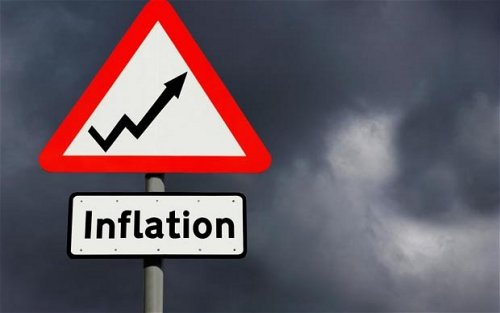Cambodia’s “Reckless” Microfinance Industry Puts Economy At Risk
Source: Nikkei Asian Review
Cambodia’s $8 billion microfinance industry, touted by Western aid groups and foreign investors as bringing financial opportunities to the country’s poor, is ensnaring families in crushing debt and could threaten the country’s economy, according to a damning report released Tuesday.
According to Cambodian rights groups Licadho and Sahmakum Teang Tnaut, reckless lending in the fast-growing sector — which counts 2.4 million Cambodians as clients — has led to coerced land sales, debt-driven migration, child labor and farmers eating less food.
The groups’ study, “Collateral Damage,” questions whether the industry’s reported nonperforming loan rate of 1.8% is kept low by such “human rights abuses” while highlighting the multimillion dollar returns made by microcredit institutions and their shareholders.
They note the majority of microcredit debt is collateralized by land titles, leaving tens of thousands of families at risk of losing their property.
Cambodia has the highest average microloan debt per borrower in the world at around $3,370 — a figure more than double the country’s GDP per capita — according to 2017 Mix Market figures. Next is Peru, at $2,471.
While the sector continues to grow, expanding by about 30% in 2018, there is increasing concern about its fragility. In October last year, the International Monetary Fund warned the “growing systematic importance” of microfinance institutions “pose risks to financial and macroeconomic stability”.
That warning came before the EU began a review of Cambodia’s preferential trade treatment due to democratic backsliding. The potential loss of duty-free access to the EU market, important for the country’s 700,000-worker textile sector, would be “catastrophic”, said one expert.
“So many of the people who are able to repay these microfinance loans, it’s because they have sons and daughters in the garment factories in Phnom Penh,” said Milford Bateman, a professor of economics and development studies who has written extensively about microfinance and was not involved in the groups’ report.
“If you take that away, then they won’t be able to pay. That’s one potentially catastrophic event.”
Bateman added that any crackdown from Thailand on Cambodian informal workers or a reduction of Chinese investment could also precipitate a “microcredit meltdown.”
“It’s a disaster already, but as you know from the emergency measures done by the government, they are trying to avert a complete crash,” he said.
The National Bank of Cambodia, which is responsible for the sector, capped annual interest rates at 18% in 2017. The MFIs, however, appear to have passed on the cost of the cap to consumers. In a report this year, the NBC acknowledged that MFIs doubled the percentage of their revenue generated from fees in 2018.
The government has also run a public information campaign distancing itself from MFIs.
The sector remains lucrative. In 2017, the country’s seven largest microcredit institutions made more than $130 million in profit.
Chan Veang, a mother-of-three whose small village is about an hour’s drive from the country’s iconic Angkor Wat temple in Siem Reap province, epitomizes the stark contrast between the success of for-profit MFIs, and the dire situation of many rural borrowers.

At her home last week, the 47-year-old, who has no regular income, laid out the paperwork for three MFI loans totaling $10,000. The forms from LOLC and Prasac, two of Cambodia’s biggest MFIs, make little sense to her, she said.
“I can’t read. They just told me where to put my thumb print,” Veang told the Nikkei Asian Review, explaining she tried to “memorize” what MFI officers told her she owed.
Like many indebted families, Veang’s three daughters and husband work in Thailand to help make repayments. Left to care for two grandchildren, Veang says she was also pressured into being a guarantor for a neighbor’s loan. She said no one read her the contract.
“I said I didn’t want to do it, the man said ‘it’ll be OK,'” she recalled. Late last month, after the neighbor absconded, credit officers came to collect.
“Five men from the organization came to my house. I did not have the money so they drove me around the village to ask to borrow money from other people. I don’t know what to do, next time I’ll have to hide or move to Thailand to work.”
The month prior, the parent company of LOLC and majority shareholder of Prasac, Sri Lanka’s LOLC Holdings, posted a record profit of $65 million for the previous fiscal year. The company, one of the most profitable listed on the Colombo Stock Exchange, did not respond to a request for comment. Hong Kong’s Bank of East Asia, which owns 21% of Prasac, also did not respond.
However Sok Voeun, CEO of LOLC Cambodia, said the company’s policy requires credit officers to explain agreements to clients who cannot read. Told about Veang’s case, he said the company “did not allow” staff to transport clients.
In their report, the human rights groups profiled 28 households. Of these, 22 had experienced a coercive land sale because of MFI debt. Thirteen had engaged in child labor to meet repayments, while 18 had a family member migrate to earn money to help pay off loans.
Twenty-six had eaten less or lowered their food quality to meet repayments to repay their debt, and 20 had taken out additional loans to pay an existing MFI loan.
In a meeting with journalists this week, representatives from Cambodia’s Microfinance Association called such cases “isolated.”
Dos Dinn, CEO of Amret, which has a loan portfolio of $789 million, said it is the MFIs that are being treated “unfair.”
“NGOs and the public and the government, they expect too much because we are working with the poor,” he said. “[You] can’t just expect everything from microfinance.”
Amret is backed by the International Finance Corp., Netherlands Development Finance (FMO) and Advans Group, a collection of development agencies that includes the European Investment Bank, the British government-owned CDC group, Agence Francaise de Development and Germany’s KFW.
In an email to Nikkei, FMO spokesman Paul Hartogsveld said the risk of over indebtedness had been recognized for “a long time” and the sector had taken “clear actions” to mitigate the risks.
He pointed to the development of “responsible lending guidelines” for the sector. He said the growth of the sector meant borrowers were shifting from “informal to formal” sources of credit. Amret, he said had “advanced risk mitigation and client protection” measures in place.
An IFC spokesperson said they would review the groups’ report. They said MFIs provided people with “much needed access to finance” but also acknowledged “legitimate concerns about indebtedness” in the sector.
Agora Microfinance, a Dutch group that holds shares in Cambodian MFI AMK, said its subsidiary “did not engage in reckless lending” and provided small loans on average less than $750 per household. However, a spokesperson said the company “shared concern about rising debt in Cambodia.”
Triodos Investment Management, which holds shares in Cambodia’s first MFI-turned commercial bank ACLEDA, would look into the claims made by the report, saying it took such cases “very seriously.”
For many, such promises may be too little, too late. Sitting by her house in rural Siem Reap, 70-year-old Peang Cham says her three daughters have all left to work in order to pay off an MFI debt. Left to care for her grandchildren, she said she wishes the family had never borrowed money in the first place.
“I have a headache everyday because I am in debt,” she said. “I would rather be poor and not have taken the money.”





